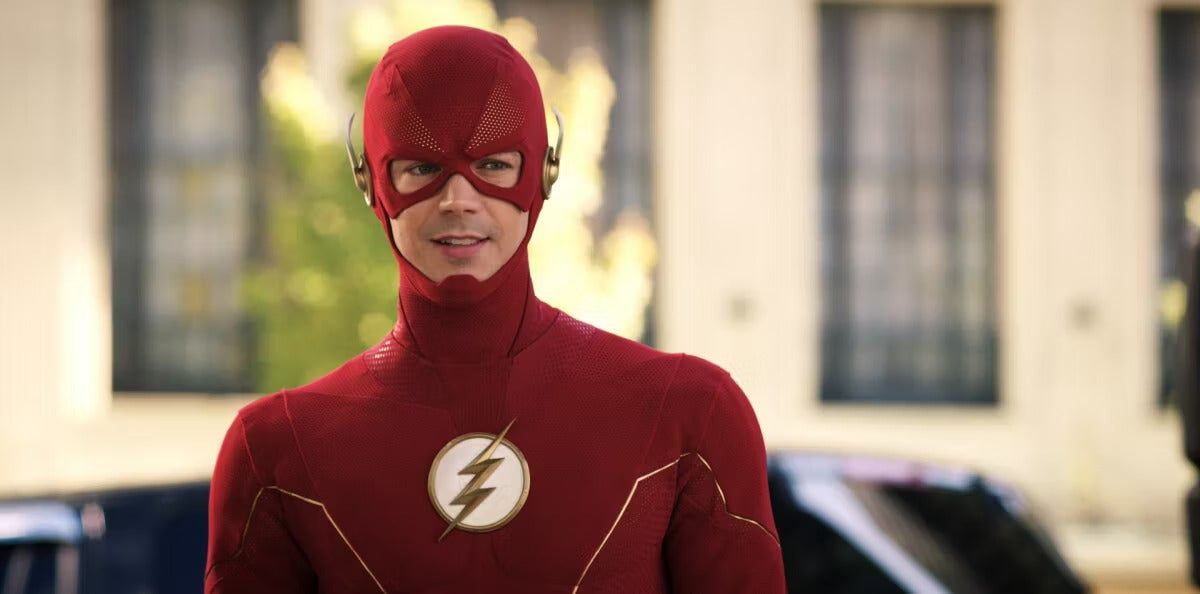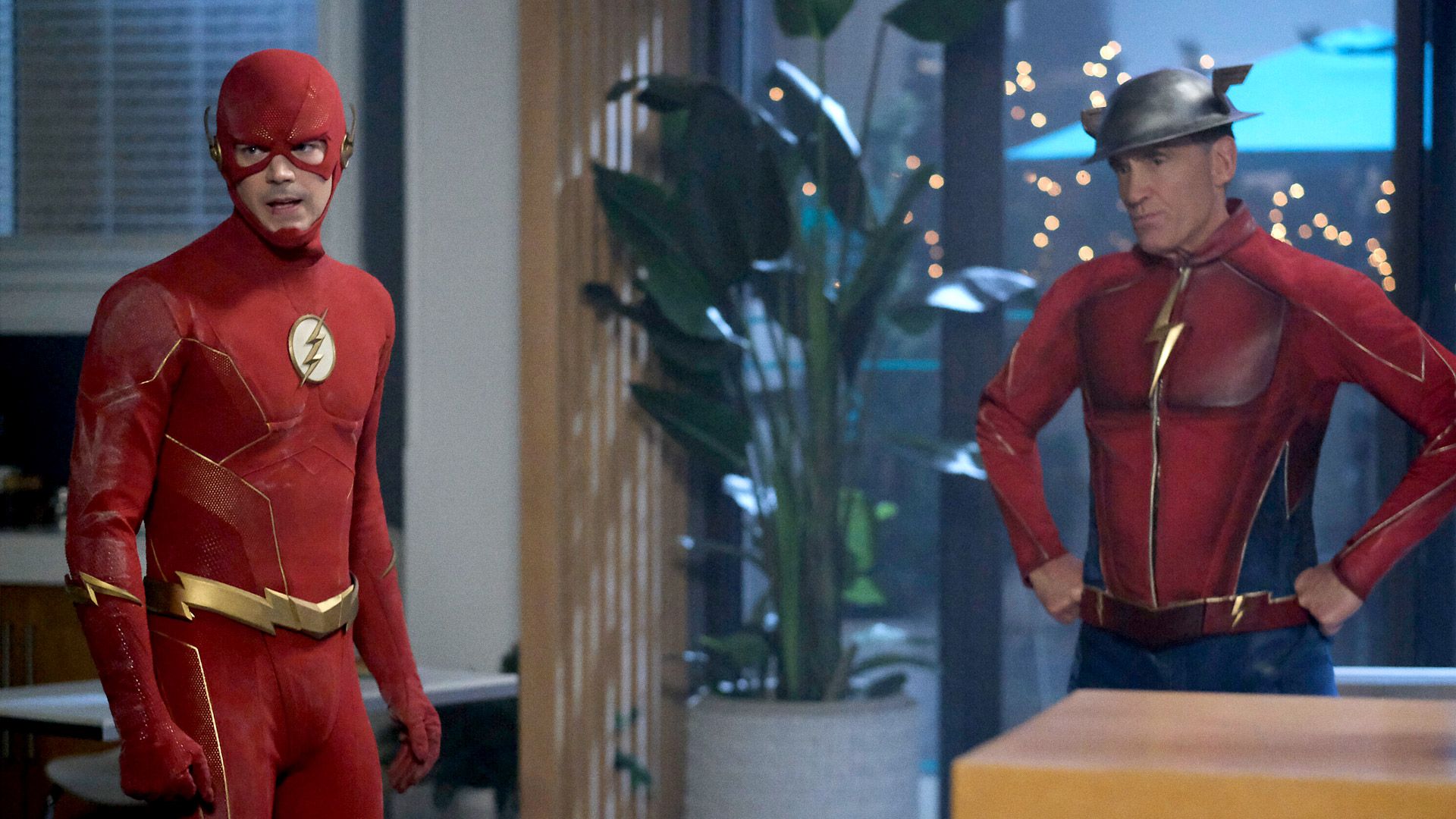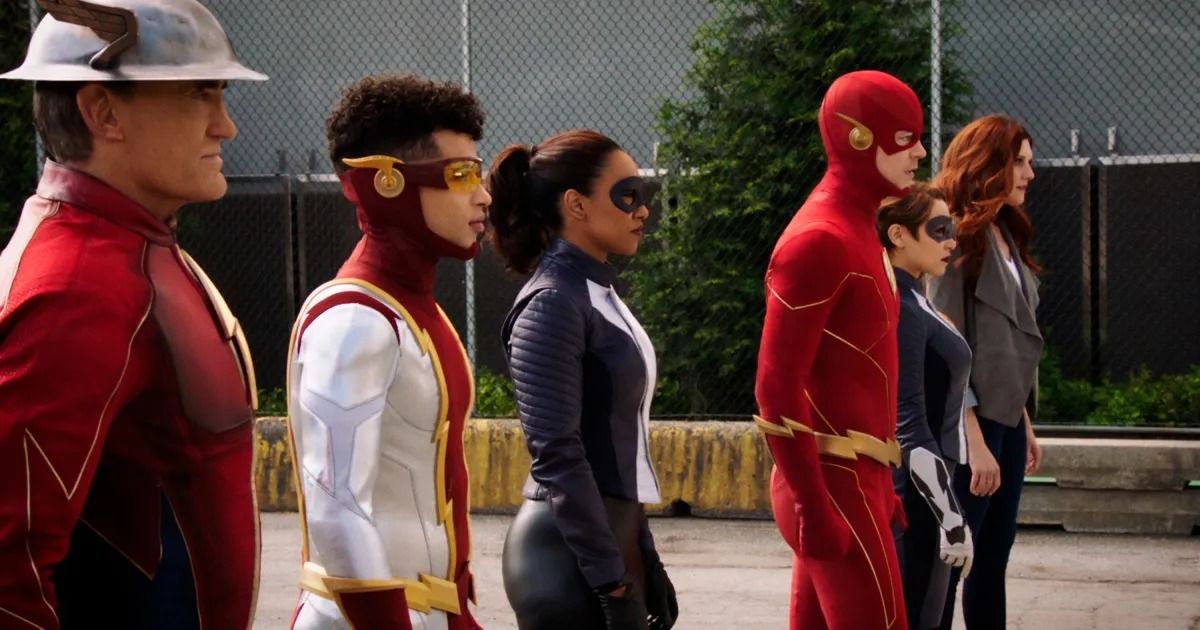Editor’s note: The following contains spoilers for the final season of The Flash The Flash is over, and with it, the last vestiges of the Arrowverse go out the door. The showrunners chose an unusual format for “The Flash: The Final Run,” breaking up the 13-episode season into mini-arcs as if they were comic book runs. But was that the right move for a show that’s run for nearly a decade, and that also, inadvertently, became the swan song of an entire franchise?
The predominant theme of the season was simple: Barry Allen/The Flash (Grant Gustin) and Iris West-Allen (Candice Patton) are ready to start a family, but there’s always some danger lurking in Central City that threatens their happily-ever-after. In the final season, which takes place over the course of almost a year, the team faces many battles and enemies, some old and some new. But the biggest battle they faced was the structure of the storytelling in this season.
‘The Flash’s Final Season Is a Disjointed Mess
Breaking up “The Flash: The Final Run” into chapters was a poor choice. None of the storylines had enough room to develop, and it all culminates in a chaotic season finale that is so rushed, it gives Barry a run for his money. We began the season with a fun time-loop episode centering on Barry and Iris, and the episode embodied all the elements we love about the show: time travel, Barry and Iris’s romance, meta-villains, and a mystery. But instead of building off those elements, we swiftly moved on to the Red Death storyline. Javicia Leslie returned to the Arrowverse, this time as an evil version of Ryan Wilder from another Earth, along with a who’s-who of Barry’s Rogues gallery. Four episodes later, the Red Death was vanquished.
The next four episodes were stand-alone, focussing on Team Flash’s interpersonal relationships in general, but not on a particular storyline. Team Flash got a spotlight episode in “The Good, the Bad and the Lucky,” Supergirl alum Nicole Maines reprised her role in “Wildest Dreams,” and “It’s My Party and I’ll Die If I Want To” was a cameo-fest that finally explained how the multiverse is still alive thanks to Oliver Queen/Spectre’s (Stephen Amell). In a regular season of 21–23 episodes, filler episodes like these break the monotony and often allow different members of the cast some time off while others step into the limelight. But when there are only 13 episodes (in the final season, no less), even filler episodes need to tie into an overarching plot. Therein lies the main issue. The Flash final season was more a collection of stories, rather than one cohesive tale. Look at how the episode titles, the Red Death arc, the fillers, and “A New World” are all written differently. It feels like the plan was that there was no plan at all.
‘The Flash’ Final Season Should’ve Been All About “A New World”
The individual episodes in “The Flash: The Final Run” were interesting, but because so many of them were self-contained, they felt out of place. And this issue came into focus, particularly during the final four episodes. “A New World” was the four-part finale of The Flash, but the story being told needed time to breathe.
The plot followed Eddie Thawne (Rick Cosnett), Iris’s boyfriend from Season 1 who sacrificed himself to save The Flash and kill his descendent Eobard Thawne/Reverse-Flash (Tom Cavanagh). He’s resurrected in the future by the Negative Speed Force who wants to turn him into its avatar. Eddie brings with him a whole new perspective. He was a nobody in the Thawne line, but he died believing he was a hero. Except, as he found out once he was resurrected, his death was meaningless because Eobard didn’t die, he kept coming back in some form or the other. Plus, Eddie’s death meant that Iris and Barry fell in love and started a family. As Eddie points out, he shot himself to save Barry’s life and Barry thanked him by stealing his fiancée. Eddie’s transformation into Cobalt Blue, the villain and then antagonist, happens over the course of the finale, and it’s too much to fit into such a short time frame.
“A New World” proved that there was a much more insightful story to tell in The Flash‘s final season. The show has always centered Barry as the one true hero of Central City, and Eddie challenges this thinking. Wally West/Kid-Flash (Keiynan Lonsdale) hinted at his own discontentment with Barry shunting other heroes to the wayside in “It’s My Party and I’ll Die If I Want To.” This theme of Barry reckoning with his “main character syndrome” is too big to be squeezed into one angry fight scene and infrequent appearances across four episodes. Eddie’s return and the challenge to The Flash’s heroism would have made for a much more compelling final season, especially since, in the finale, Barry shares his powers with a band of new heroes plucked straight from the comics: Avery Ho (Piper Curda), Max Mercury (Trevor Carroll), and Jess Chambers (Hana Destiny Huggins). Though, we have to wonder, why does Barry need to create new heroes when Team Flash is right there?
Team Flash Never Got Their Chance to Shine
The Arrowverse has always had an issue with telling the stories of its solo heroes in team settings. Arrow could not find a balance, whereas Supergirl did. The Flash has tried and often succeeded, but in “The Flash: The Final Run,” it spectacularly failed. At every given chance, Barry would find anyone and everyone else to help him in his battles other than Team Flash. What is the point of having a team, if you don’t lean on them? The team was sidelined for most of the season. The little glimmer of hope we had that they’d come back into the main storyline dissipated during “A New World” because Eddie’s story had to be told. This is another reason why the mini-arcs didn’t work, someone had to get short shrift, and that someone(s) was Team Flash.
Allegra Garcia (Kayla Compton) hardly used her powers, and instead, her entire arc became about her romance with Chester P. Runk (Brandon McKnight). They were both given so little to do. Cecile Horton (Danielle Nicolet) had her moments and got to be a superhero, and mentor and deal with balancing her personal life with being Central City’s savior, but her screen time was constantly curtailed because there were so many guest stars. Allegra and Cecile get superhero names (Wavelength and Virtue) plus amazing supersuits, they face off along with the rest of Team Flash against Eddie as Cobalt Blue (also in an amazing supersuit), and all this happens for a scene and a half. That’s it? That’s not enough! We want more, but can’t have it because the whole show is over.
Adding Mark Blaine/Chillblaine (Jon Cor) to the team in the final, over-bloated season did Team Flash no favors. The writers didn’t seem to know what to do with him, which was unfair. Why couldn’t he have just been Frost’s (Danielle Panabaker) grieving boyfriend who decides to help his former girlfriend’s friends out when needed? Then there was the whole Khione (also Panabaker) character, who was simply a deus ex machina. A goddess who came out of nowhere, and had no existing relationship with the team, effectively denied Caitlyn Snow (the original Panabaker character) a satisfying end to her series arc. And amidst the many cameos, one of the show’s original characters, Carlos Valdes’ Cisco Ramon, unfortunately never returned for this last foray.
Let’s not even start with Iris. This show has never done right by the character. It’s bad enough she was missing for chunks of Season 8 and that the show seemed to forget about Patton’s character altogether. Her having more screen time in the first half of the final season was a good sign, right? Wrong. Iris spends the majority of the last four episodes being stuck in the hospital, in labor, mostly on her own (not a friend or family member in sight). Seriously? In 2023, the leading lady of a superhero show is abandoned with a pregnancy storyline. To make things worse, we learn Iris won a Pulitzer Prize the same week she has her baby. So, the show makes viewers watch Iris give birth, but not her receiving the highest honor of her career. It’s like the show traveled back in time with its storytelling.
The structure of the season undermined its storytelling. Every time a plot thread was pulled it was also wrapped up a little too easily and quickly. Most of the characters were underserved, especially the supporting characters in Team Flash. Even Barry and Iris’s relationship, though central to the season, wasn’t afforded the emotional heft that was built up over nine seasons. The Flash finale is the end of an era and the farewell to a franchise, but the showrunners seem to have forgotten that the job of the season, first and foremost, is to tell a cohesive story. Cameos and returning guest stars can only go so far when the storytelling is disconnected. The season felt rushed, which would be funny given that the show is about the fastest man alive. The show’s talent and fans alike have dedicated a decade to this show, and so a better-planned send-off was the only expectation. The Flash is the conclusion of the Arrowverse, but it didn’t even do justice to itself, let alone the entire franchise.
Stay connected with us on social media platform for instant update click here to join our Twitter, & Facebook
We are now on Telegram. Click here to join our channel (@TechiUpdate) and stay updated with the latest Technology headlines.
For all the latest TV News Click Here



